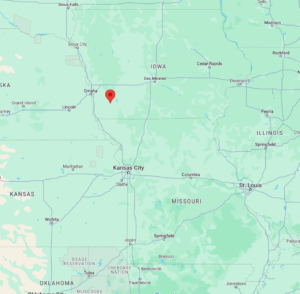Beef prices are projected to continue increasing as U.S. beef production declines with no signs of a cattle herd rebuild. Additionally, cheap beef may soon become further out of reach…
Iowa Fertilizer Spill Killing Fish
The Iowa Capital Dispatch’s Jared Strong reported this past weekend that “state conservation officials have found no living fish in the East Nishnabotna River south of Red Oak — the result of a massive fertilizer spill at a farmers cooperative. The only living fish were discovered near Hamburg in far southwest Iowa, downstream of where the river joins with the West Nishnabotna, said John Lorenzen, a fisheries biologist for the Iowa Department of Natural Resources.
“However, the handful of surviving carp he saw appeared to be in the process of dying,” Strong reported. “‘I’ve never dealt with a situation like this before,’ Lorenzen said.”
Strong reported that Lorenzen had “evaluated sections of about 50 river miles over the course of four days to determine the scope of the fish kill. He had not yet fully tallied the estimated number of dead fish on Friday but noted that there were also numerous dead frogs, snakes, mussels and earthworms.”

The Fertilizer Spill
The Iowa Department of Natural Resources reported last week that “on March 11, New Cooperative in Red Oak notified the Iowa Department of Natural Resources (DNR) of a release on-site early Monday (March 11) morning.”
“Approximately 1,500 tons of liquid nitrogen fertilizer (32% solution) discharged into a drainage ditch, then into the East Nishnabotna River,” the Iowa DNR reported. “The release occurred due to a valve left open on an above ground storage tank overnight. Areas of pooled fertilizer have been pumped into a vac truck and will be land applied later.”
The Iowa DNR then reported this past weekend that “due to low water levels in the East Nishnabotna, the concentration of the liquid nitrogen fertilizer is higher than during normal stream flows, causing concern for all animals due to high nitrate and urea levels. Iowa State University College of Veterinary Medicine Toxicologist Scott Radke recommends keeping all animals away from the East Nishnabotna River until the plume of contaminant moves out of the area.”
Spill Has Reached Missouri
Because of the river’s location in southwest Iowa, the spill quickly reached Missouri and has prompted a response from the Missouri Department of Natural Resources as well, according to reporting from KMA Land’s Ethan Hewett.
“Karen Rouse is the regional director of the Missouri DNR’s Kansas City office. Rouse says her office has sent crews to take water samples from the Nishnabotna and Missouri rivers,” Hewett reported. “‘It’s mainly for ammonia, and there will be three sampling locations on the Nishnabotna and two on the Missouri,’ said Rouse. ‘Typically, we’re going to try and get public access points or whatever access we can safely obtain.'”
Hewett reported that “while the Missouri River is running below average, Rouse says the Nishnabotna contributes roughly 353 cubic feet per second of water to the major waterway compared to the approximately 22,000 cfs the river is running at both Browning, Nebraska and Rulo, Missouri.
“‘Comparatively, what the Nishnabotna is contributing to the Missouri is not that much,’ Rouse explained. ‘But, it’s certainly something that bears going up their to sample, which we are.'”
Lasting Impacts Remain Uncertain
Strong reported that “the lasting impact on the fish populations is not yet clear. Lorenzen said many of the game fish such as catfish and walleye are likely still in the Missouri River, where they stay during colder months until returning to the Nishnabotna rivers in the spring. Large numbers of small fish — which the bigger fish feed upon — have died, but those populations can be restored by fish that survived upstream from the spill or in the numerous tributaries that were not affected by it.”





